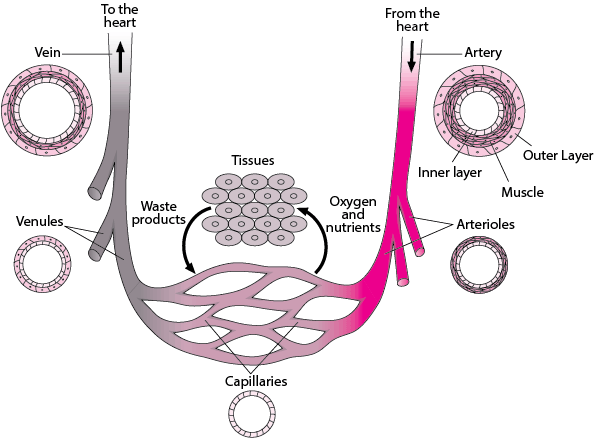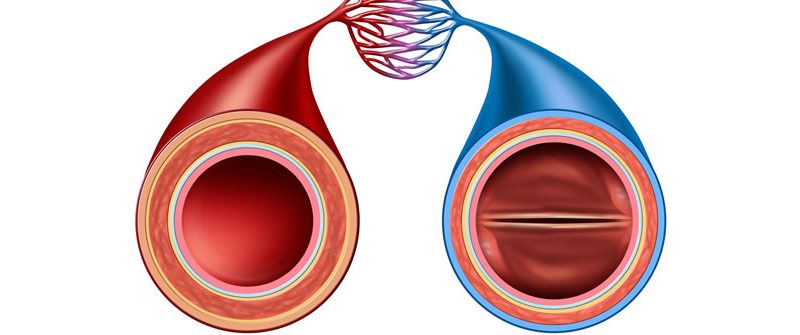If you’re looking to learn Spanish, you need to know about blood vessels. Blood Vessels in Spanish is a comprehensive guide to understanding the basics of blood vessel anatomy and function. This guide begins with an overview of how blood vessels work, and then proceeds to cover specific topics such as carotid artery, aorta, vena cava, and more. By learning about these important blood vessels, you can improve your speaking and writing skills, as well as your overall health.

Spanish is one of the most diverse languages in the world. That’s why it’s important to know all of the blood vessels in Spanish. Here, we’ll take a look at some of the most common blood vessels in Spanish and explain how they work.
If you’re studying Spanish, you probably know blood vessels. But did you know that there are other types of blood vessels? In this post, we’ll take a look at some of the most common blood vessels in Spanish and how they can help you with your health.
You’re likely asking yourself, what are blood vessels? And how do they work? In this blog post, we’re going to discuss the importance of blood vessels in Spanish.blood vessels are tubes that carry oxygen and nutrients throughout your body.
Blood Vessels in Spanish: What You Need to Know.
Spanish is one of the most spoken languages in the world, and it has a rich history. Nowhere is this more evident than in Spanish blood vessels. Spanish blood vessels are some of the most important in the body, and they play an important role in the way your blood travels through your body. In addition to being key for getting your blood to where it needs to go, Spanish blood vessels also help protect your heart and other organs. But how do you know if you have a Spanish blood vessel? And what are some potential health risks associated with having a Spanish blood vessel?
What are Spanish blood vessels?
Spanish blood vessels are two blood vessels: the aorta and the vena cava. The aorta is the larger of the two, accounting for over 80 percent of blood flow. However, it isn’t necessarily important to know how big this vessel is—it’s more important to know what’s inside it. A major part of its functionality is to transport oxygen around your body. It also plays an important role in regulating hormones and other chemicals that are released into your bloodstream throughout your day.
The vena cava, on the other hand, accounts for less than 15 percent of your body’s total blood flow. It isn’t necessary to know exactly how much blood is flowing through your vena cava; however, there are some signs that can help you determine if you have a Spanish blood vessel:
● Your heart may beat faster or slower
● You may feel breathless or lightheaded
● You may experience chest pain or dizziness
Despite these symptoms, you don’t need to worry about having a Spanish blood vessel; they’re not dangerous. In fact, research suggests that having a Spanish blood vessel doesn’t usually lead to any health issues. Some people with this variation also do not experience symptoms associated with
What do Spanish blood vessels do?

Spanish blood vessels are called carotids, and they’re located in the neck of your neck. They help to move blood from your heart to other parts of your body. The two main types of Spanish blood vessels are those that are responsible for moving oxygenated blood from the heart to the rest of your body and those that help move carbon dioxide-depleted blood from the lungs back to your heart.
If you have a Spanish blood vessel, there’s a potential risk associated with having one. And sometimes it can be difficult to tell whether you have a Spanish blood vessel without medical tests or without taking a medical history.
Being able to recognize if you have a Spanish blood vessel is extremely important since it can potentially raise your risk for serious health problems such as sudden death (heart attack or stroke) or bleeding disorder (a condition in which blood clots).
One way to determine whether you have a Spanish blood vessel is through physical exam by a doctor who specializes in vascular medicine. But even if you don’t need such an exam, having this knowledge will still help boost confidence when talking about this topic with others—especially if you’re part of an ethnic group that may not know what they may be exposing themselves too!
What are some potential health risks associated with having a Spanish blood vessel?
Spanish blood vessels are a common feature of the body and can be seen on virtually all humans. But not everyone has them, which means there are some potential health risks associated with having a Spanish blood vessel.
First, let’s talk about the anatomy behind your Spanish blood vessels. When you have a Spanish blood vessel, it’s called an “anterior” or “posterior” vessel (there are two in total). The anterior vessel supplies the heart and lungs and sends oxygen to your red blood cells. This is important because if you lack oxygen to your heart or lungs, this may cause an emergency situation that could result in death.
The posterior artery delivers oxygenated blood from the heart to other internal organs like the brain and muscles. And that’s just one function of a Spanish blood vessel! There are more than 20 other factors to consider when looking at these veins; for example, they can grow larger depending on where in your body they’re located.
How can you tell if you have a Spanish blood vessel?

There are no easy answers to these questions. The best way to find out if you have a Spanish blood vessel is to take a blood test. A blood test can help determine which specific types of blood vessels are present in your body, and its findings can be used to identify whether or not you have a specific type of blood vessel.
A quick Spanish-English dictionary is an excellent tool for identifying the words related to this topic. Here’s an example:
The following information will help you find the official source for this information:
Some potential health risks associated with having a Spanish blood vessel?
The Spanish blood vessel is the main vessel that carries blood from your heart to all of your other organs, including the brain. If you have a problem with your Spanish blood vessels, it’s possible that this could be the cause of your health problems and lead to serious health issues down the road.
There are a few potential causes for this. If you’re not aware of what causes a particular health issue, it can be difficult to search for potential causes in an internet search engine. So, let’s take a look at some common causes of Spanish blood vessel problems.
1. Cardiovascular diseases: This can include conditions like heart disease or congestive heart failure (CHF). In these cases, your heart is unable to pump blood effectively through your body because of other factors such as high cholesterol levels or a weak heart muscle. For example, if you’re experiencing CHF and have high cholesterol, it’s possible that you might experience a shortness of breath when walking up stairs or having exertion on an incline plane. It may also occur when you go up and down stairs too quickly or too often during exercise due to low cardiac output (the amount of blood being pumped by the heart) in comparison with cardiovascular output (the amount